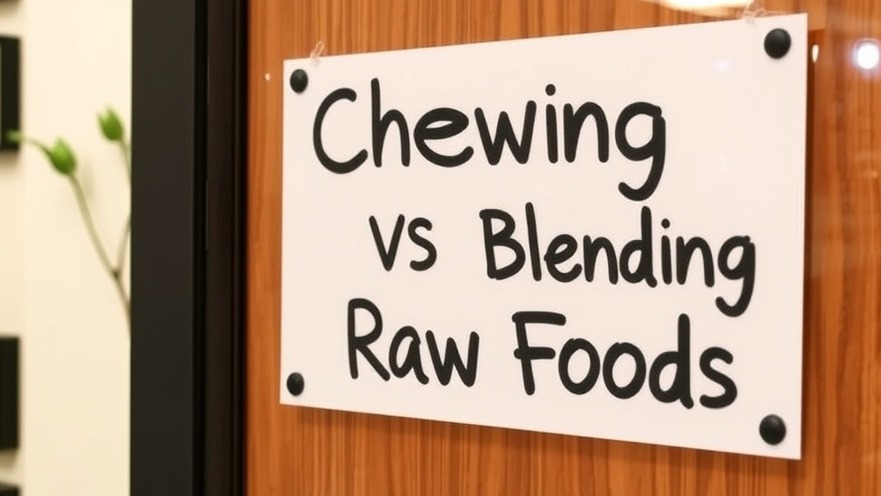
Do We Really Absorb More Nutrients by Chewing or Blending?
The debate around whether blending or chewing fruits and vegetables maximizes nutrient absorption is gaining traction among health enthusiasts and casual eaters alike. In the video "Does Blending vs. Chewing Affect Nutrients?" by Doug Evans, the engaging discussion highlights the intricate relationship between food preparation methods and our body’s ability to harness the goodness from what we eat.
In "Does Blending vs. Chewing Affect Nutrients?" the discussion dives into nutrient absorption techniques, exploring key insights that sparked a deeper analysis on our end.
The Science Behind Chewing and Blending
Chewing is quite literally the first step in the digestive process. As we chew food, we break it down into smaller pieces, which increases its surface area. This process allows enzymes in our saliva to begin breaking down nutrients even before they reach the stomach. On the flip side, blending converts whole fruits and vegetables into liquid forms that can make absorption easier, as the blending process already breaks down cell walls, making nutrients more accessible.
Both methods have their merits, and much depends on personal preferences and digestive health. Those with sensitive stomachs or digestive issues may find blended foods easier to digest and absorb, while others may benefit from the act of chewing as it encourages mindfulness and prevents overeating.
Exploring the Benefits of Each Method
Chewing provides not just the physical breakdown of food but also promotes saliva production, which is crucial for digestion. This method allows for a slower intake of food, aiding the body's fullness signals. In contrast, blending offers the convenience of quickly consuming a variety of foods at once, making it an excellent option for those with busy lifestyles.
Moreover, smoothies can be an inventive way to sneak in daily servings of fruits and vegetables. By blending ingredients like spinach, bananas, and berries, one can create nutrient-packed drinks that are both delicious and nutritious. However, be cautious of added sugars and ingredients that may compromise the health benefits!
Which Method Is Best for You?
The decision between chewing and blending may also be influenced by individual health goals. If you aim to lose weight or maintain energy levels, the act of chewing can be advantageous, encouraging slower eating and thorough digestion. However, if you're looking to boost your nutrient intake efficiently, especially post-workout, blending might be your go-to option.
Ultimately, there's value in both methods. Incorporating a mix of blended smoothies and whole foods into your diet can create a balanced approach, ensuring you reap the benefits of both nutrient absorption techniques.
Mindful Eating and Its Impact
A critical takeaway from the discussion raised in Doug Evans’ video is the importance of mindful eating. Whether you opt for chewing or blending, being present during meals enhances digestion and can promote healthier choices. Noting how you feel before, during, and after eating can provide insights into what works best for your body.
Nurturing this awareness enables you to make informed dietary choices, whether you're savoring a fresh salad or enjoying a revitalizing smoothie.
Practical Tips for Including Both Methods in Your Diet
To maximize nutrients in your diet, consider these practical tips:
Start your day with a smoothie packed with greens and fruits to boost energy levels.
Incorporate whole fruits and vegetables during meals, encouraging thorough chewing.
Experiment with different blending techniques—add nuts, seeds, or herbs to elevate nutritional value.
Create a mindful eating environment: eliminate distractions to concentrate solely on your meal.
Final Thoughts on Nutrient Absorption
In conclusion, whether you prefer chewing or blending, the key takeaway is to remain adaptable in your approach to nutrition. Both methods enhance our ability to absorb and enjoy nutrients from the foods we choose. By blending these techniques, you can enrich your diet and foster a more sustainable health journey.
Consider how the methods discussed in Doug Evans' insightful video apply to your lifestyle. Experiment with integrating both chewing and blending into your meals and feel the difference!
 Add Row
Add Row  Add
Add 




Write A Comment